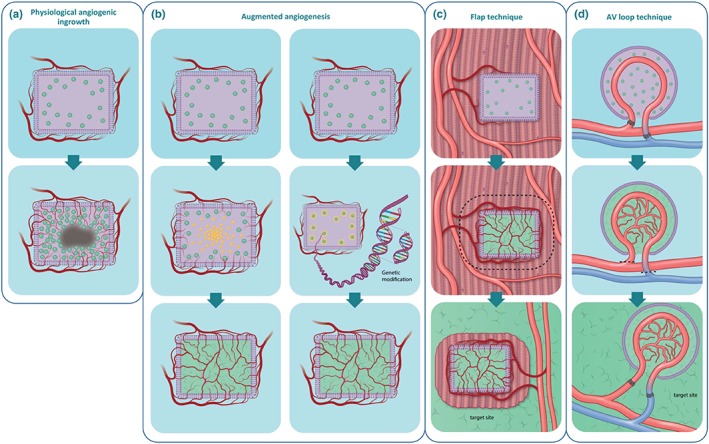Figure 2.

In vivo prevascularization approaches in tissue engineering. (a) The major issue of relying on physiological angiogenic ingrowth into a (nonprevascularized) tissue graft is the lack of adequate and timely vascularization, leading to cell necrosis in the core of the graft. (b) A first approach to tackle this issue in vivo is by enhancing the naturally occurring angiogenic response within the graft, either by loading the graft/scaffold with (a gradient of) proangiogenic factors (left panel) or by genetic modification of the graft cells to induce enhanced secretion of angiogenic factors (right panel). Both strategies are aimed at enhancing angiogenesis directly at the target site. Two alternative approaches use an ectopic implantation site prior to the actual target site to establish a vascular network. (c) The flap technique is one of these two techniques and is characterized by preimplantation in muscle tissue to prevascularize the graft. Upon transplantation, however, part of the muscle tissue will also be transplanted, and as such will cause tissue damage at the ectopic implantation site. (d) An improved technique that has been applied is the arteriovenous (AV) loop technique. It follows the same principle as the flap technique, yet can be established at any location, and without causing damage of the ectopic implantation site. The principle is based on an encapsulated graft, which incorporates an AV loop to facilitate initial perfusion until further vascularization can be established. The vascularized graft then can be transplanted to the target site. Similar approaches such as vascular chambers are based on the AV loop technique principles [Colour figure can be viewed at http://wileyonlinelibrary.com]
